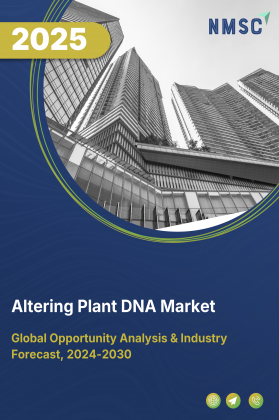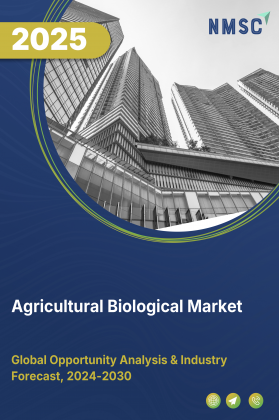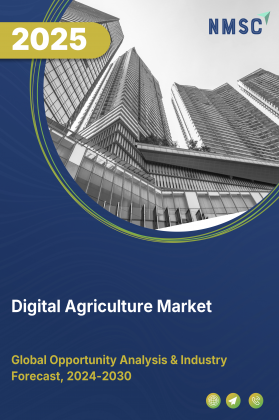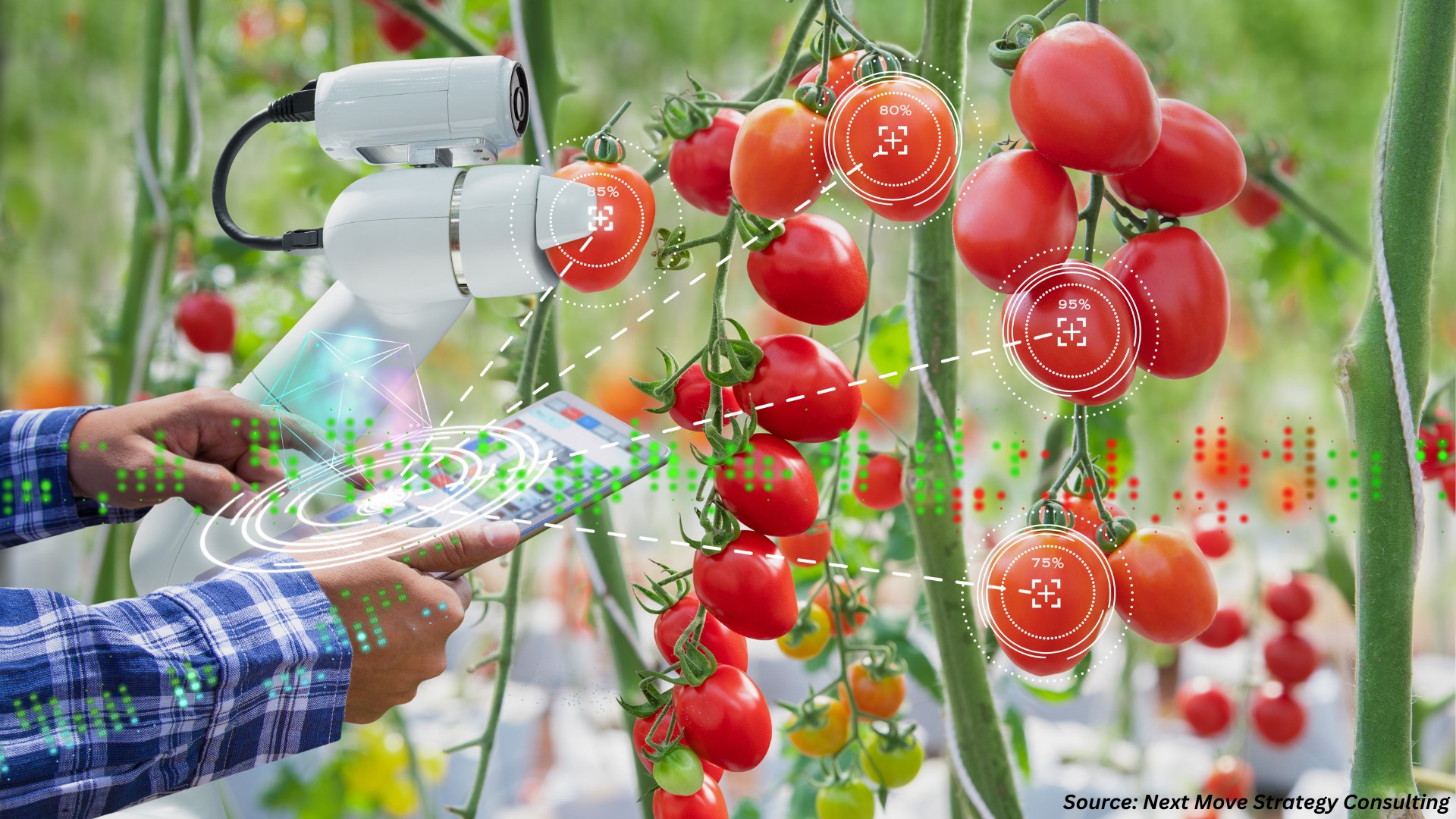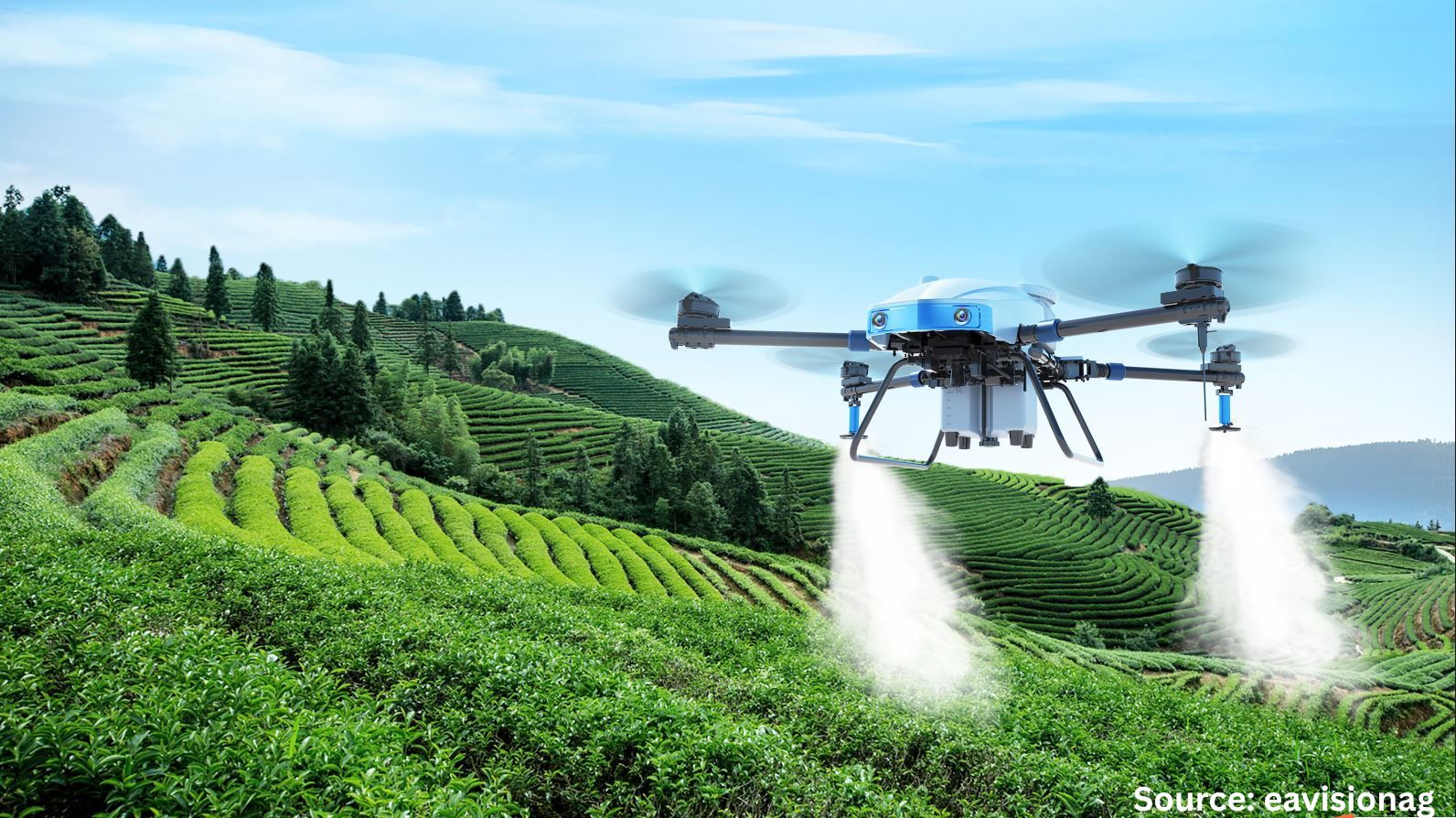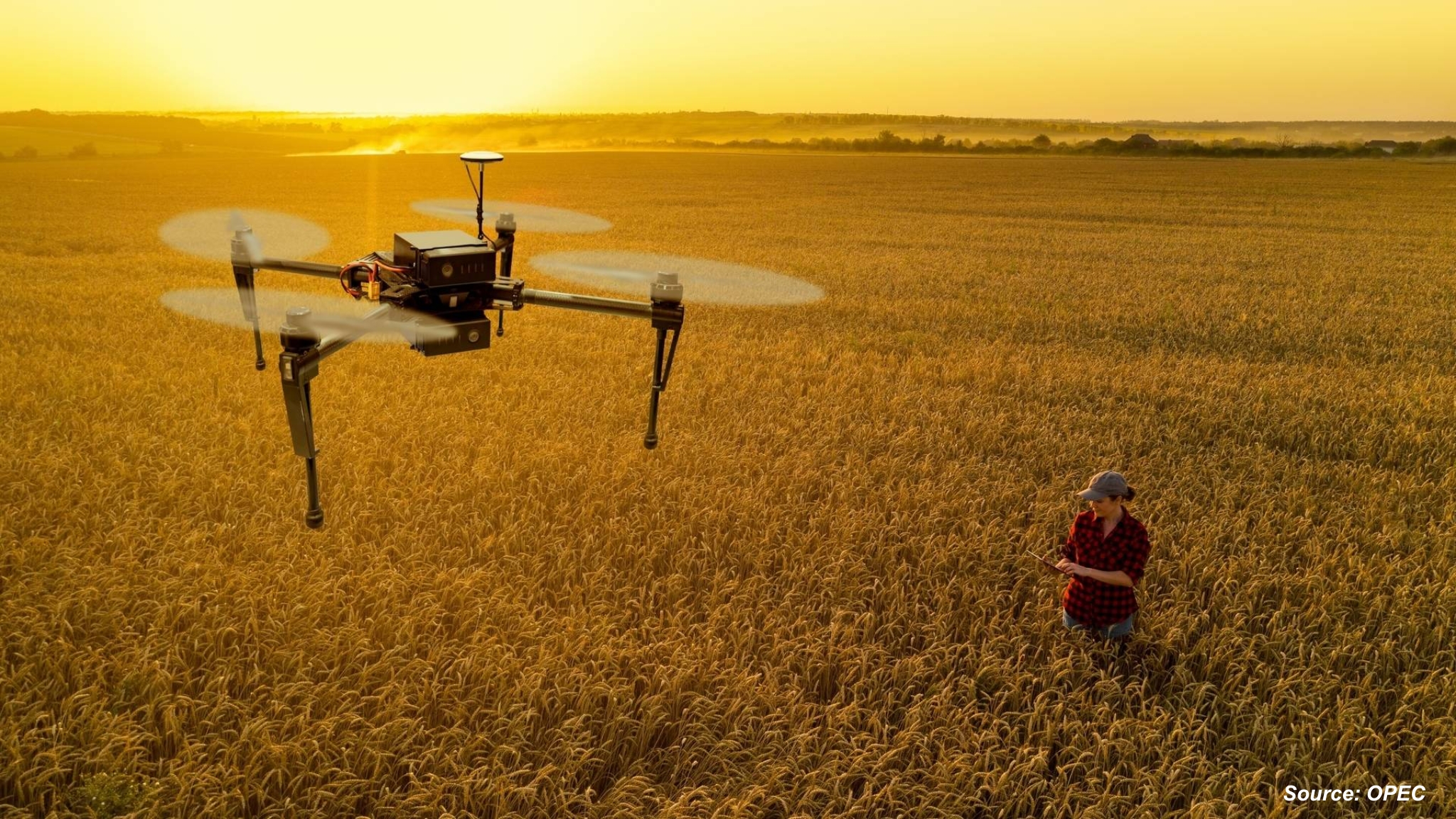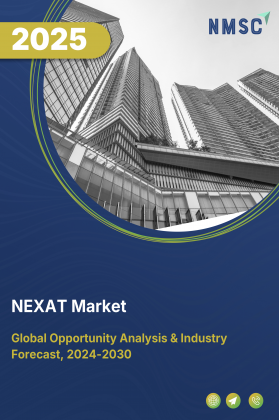
NEXAT Market by Component (Hardware, Software, Services, and Attachments & Modules), by Technology Type (Precision Farming, Automation & Robotics, and Others), by Farm Size (Small & Medium Farms, Large Farms, and Mega Farms), by Distribution Channel (Direct Sales, Dealerships/Distributors, and Online Platforms), by Application (Seeding & Planting, Fertilization & Spraying, Others), and by End-Users (Large-Scale Farmers, Others) – Global Opportunity Analysis and Industry Forecast, 2025–2030
Industry Outlook
The global NEXAT Market size was valued at USD 100 million in 2024 and is estimated to reach USD 104 million in 2025 and is predicted to reach USD 126 million by 2030 with a CAGR of 4.0% from 2025-2030.
The market is experiencing significant growth, driven by the expansion of the agriculture sector and rising global food demand, which is pushing farmers to adopt advanced, multifunctional farming systems. NEXAT’s ability to integrate plowing, seeding, fertilizing, and harvesting into a single platform enhances efficiency, reduces labor costs, and supports sustainable farming practices.
The growing adoption of IoT technologies further strengthens its appeal by enabling real-time monitoring and data-driven decision-making. However, high capital investment and maintenance costs remain key barriers, particularly for small and medium-sized farms. Looking ahead, the increasing shift toward precision agriculture and eco-friendly solutions presents strong opportunities for NEXAT adoption worldwide.
Agriculture Sector Expansion Driving NEXAT Market Growth
The expansion of the agriculture sector is significantly boosting the adoption of NEXAT systems as farmers increasingly turn to advanced technologies to improve operational efficiency. Traditional farming methods require multiple machines and labor-intensive processes for plowing, seeding, fertilizing, and harvesting, leading to higher costs and inefficiencies.
NEXAT addresses these challenges by offering a single integrated system that performs all these functions seamlessly. This consolidation not only saves time and labor but also ensures greater accuracy in farming operations, leading to better crop management and reduced resource wastage. Additionally, the growing focus on sustainable farming practices is prompting farmers to embrace solutions like NEXAT that support precision farming, minimize environmental impact, and promote long-term soil health.
Increasing Global Food Demand Boosting Technology Integration
Rising global food demand, driven by population growth, is pushing farmers toward advanced agricultural technologies such as NEXAT. According to the World Bank, the world population is expected to reach 10 billion by 2050, requiring a 60% increase in food production. The multifunctional capabilities of NEXAT systems streamline sowing, fertilizing, and harvesting processes, enabling farmers to maximize crop yields while ensuring efficiency and sustainability.
Growing IoT Adoption Accelerating NEXAT Market Expansion
The growing adoption of IoT technologies in agriculture further drives demand for NEXAT systems, as their integration with IoT enables real-time monitoring and data-driven decision-making. This connectivity allows farmers to optimize resource use, improve operational efficiency, and enhance productivity. According to 5G Americas, IoT subscriptions are projected to grow from 3.3 billion in 2024 to 5 billion by 2028, fueling the advancement of smart farming solutions worldwide.
High Capital Investment Limiting Adoption
One of the major restraints for the NEXAT market demand is the high initial investment cost associated with its advanced technologies and multifunctional capabilities. The integration of automation, precision tools, and real-time data analytics requires significant capital, making it challenging for small and medium-sized farmers to afford these systems. Limited access to financing options and the high cost of maintenance further hinders large-scale adoption, restricting the market's growth potential, especially in developing regions.
Growing Adoption of Precision Agriculture Creates Future Opportunity
The rising adoption of precision agriculture presents lucrative growth opportunities for the NEXAT market. Advanced technologies such as GPS mapping, IoT sensors, and AI-based analytics enable farmers to optimize resource utilization, reduce input costs, and achieve higher productivity. As environmental concerns and the need for sustainable farming practices grow, agricultural businesses are increasingly investing in precision farming tools. This shift toward data-driven and eco-friendly farming solutions is expected to boost the demand for innovative systems like NEXAT in the coming years.
Market Segmentations and Scope of the Study
The NEXAT market report is segmented by component, technology type, farm size, distribution channel, application, end-users and region. By component, it includes hardware, software, services, and attachments & modules. By technology type, it is divided into precision farming, automation & robotics, smart machinery integration, AI & data analytics, and others. By farm size, the market covers small & medium farms (less than 500 hectares), large farms (500–5,000 hectares), and mega farms (above 5,000 hectares). By distribution channel, it is segmented into direct sales, dealerships/distributors, and online platforms. By application, it includes seeding & planting, fertilization & spraying, crop monitoring, soil management, irrigation management, harvesting, and farm logistics & fleet management. By end-users, it comprises large-scale farmers, agri-businesses, contract farming companies, cooperatives & farming clusters, and research & agri-tech institutes. The regional breakdown includes regions such as North America, Europe, Asia-Pacific, and the Rest of the World (RoW).
Geographical Analysis
North America is the fastest-growing region in the NEXAT market share, driven by environmental challenges such as extreme temperature fluctuations and drought conditions that negatively impact plant growth. Farmers across the region are increasingly relying on advanced mechanization solutions to enhance crop resilience, promote root development, and improve photosynthetic efficiency, ensuring stable yields despite adverse conditions. According to a recent report by World Weather Attribution, temperatures in parts of the U.S. exceeded 50°C, severely affecting crop growth and prompting farmers to adopt adaptive and reliable technologies like NEXAT to sustain productivity and counter climate variability. Moreover, the region’s strong precision farming infrastructure, technological advancements, and government initiatives promoting climate-resilient agriculture further accelerate the adoption of next-generation farming systems.
Europe is witnessing steady growth in the market, driven by stringent regulations promoting sustainable agriculture and reduced chemical inputs. Countries like Germany, France, and the Netherlands are at the forefront of adopting advanced mechanized farming solutions, supported by significant investments in R&D and smart farming infrastructure. The European Commission’s Vision for Agriculture and Food, introduced in March 2025, provides a strategic roadmap to promote sustainable, resilient, and innovative agriculture across the EU. The plan addresses climate change, biodiversity loss, and the need for fair and inclusive food systems. Additionally, the EU’s emphasis on reducing the use of chemical fertilizers is encouraging the adoption of innovative alternatives and precision technologies like NEXAT to ensure higher efficiency and lower environmental impact.
The expanding agricultural sector in the Asia-Pacific region is driving strong demand for NEXAT systems as farmers increasingly focus on enhancing crop yields and operational efficiency. Advanced mechanization technologies are being adopted to tackle challenges such as soil health degradation, nutrient management, and environmental stress while ensuring sustainable agricultural practices. Government support further strengthens market growth, highlighted by the Department of Agriculture and Farmers’ Welfare’s budget in India, which rose from USD 2.53 billion in 2013–14 to USD 14.13 billion in 2024–25, demonstrating a strong commitment to agricultural modernization and productivity enhancement. With growing food demand due to rising populations, the region is expected to remain a key contributor to the market’s expansion.
In Latin America, the Middle East, and Africa, the NEXAT market is emerging as farmers focus on improving crop resilience, sustainability, and operational efficiency. Countries such as Brazil, Argentina, South Africa, and Kenya are investing in modern agricultural technologies to address challenges including water scarcity, soil degradation, and climate variability.
Government initiatives, foreign investments, and collaborations with agri-tech providers are driving technology adoption. However, limited awareness, infrastructure gaps, and high capital requirements in several areas slow down large-scale implementation, presenting both challenges and opportunities for market players in these regions.
Strategic Innovations Adopted by Key Players
Key players in the NEXAT industry are driving market growth through direct seeding partnerships, zero-till technology advancements, soil-friendly system integrations, and innovative module compatibility that enhances soil conditioning and seedbed preparation.
-
In April 2025, K-Hart Industries Ltd. announced a direct seeding partnership with NEXAT, focusing on zero-till technology and soil-friendly Gent Undercut system, with a notable first test in Ukraine.
-
In October 2024, Güttler GmbH introduced their Matador 1360 prism roller, which became compatible with the NEXAT system and delivered excellent soil conditioning and seedbed preparation across varying soil types.
Key Benefits
-
The report provides quantitative analysis and estimations of the NEXAT market from 2025 to 2030, which assists in identifying the prevailing market opportunities.
-
The study comprises a deep-dive analysis of the current and future NEXAT market trends to depict prevalent investment pockets in the industry.
-
Information related to key drivers, restraints, and opportunities and their impact on the NEXAT market is provided in the report.
-
Competitive analysis of the players, along with their market share is provided in the report.
-
SWOT analysis and Porters Five Forces model is elaborated in the NEXAT market study.
-
Value chain analysis in the market study provides a clear picture of roles of stakeholders
NEXAT Market Key Segments
By Component
-
Hardware
-
Software
-
Services
-
Attachments & Modules
By Technology Type
-
Precision Farming
-
Automation & Robotics
-
Smart Machinery Integration
-
AI & Data Analytics
-
Others
By Farm Size
-
Small & Medium Farms (<500 hectares)
-
Large Farms (500–5,000 hectares)
-
Mega Farms (>5,000 hectares)
By Distribution Channel
-
Direct Sales
-
Dealerships/Distributors
-
Online Platforms
By Application
-
Seeding & Planting
-
Fertilization & Spraying
-
Crop Monitoring
-
Soil Management
-
Irrigation Management
-
Harvesting
-
Farm Logistics & Fleet Management
By End-Users
-
Large-Scale Farmers
-
Agri-Businesses
-
Contract Farming Companies
-
Cooperatives & Farming Clusters
-
Research & Agri-Tech Institutes
By Region
-
North America
-
The U.S.
-
Canada
-
Mexico
-
-
Europe
-
The UK
-
Germany
-
France
-
Italy
-
Spain
-
Denmark
-
Netherlands
-
Finland
-
Sweden
-
Norway
-
Russia
-
Rest of Europe
-
-
Asia-Pacific
-
China
-
Japan
-
India
-
South Korea
-
Australia
-
Indonesia
-
Singapore
-
Taiwan
-
Thailand
-
Rest of Asia-Pacific
-
-
RoW
-
Latin America
-
Middle East
-
Africa
-
Key Players
-
NEXAT GmbH
-
Väderstad AB
-
Carl Geringhoff Vertriebsgesellschaft mbH & Co. KG
-
Baldan Implementos Agrícolas S/A
-
HERBERT DAMMANN GmbH
-
APV – Technische Produkte GmbH
-
Einböck GmbH & Co KG
-
Evers Agro B.V.
-
K-Hart Industries Ltd.
-
BAARCK Landmaschinen GmbH & Co. KG
-
Eidam Agrarsystem GmbH (innoMADE)
-
Landmaschinen Wienhoff GmbH
-
Incomagri
-
Güttler GmbH
Report Scope and Segmentation:
|
Parameters |
Details |
|
Market Size in 2025 |
USD 104 Million |
|
Revenue Forecast in 2030 |
USD 126 Million |
|
Growth Rate |
CAGR of 4.0% from 2025 to 2030 |
|
Analysis Period |
2024–2030 |
|
Base Year Considered |
2024 |
|
Forecast Period |
2025–2030 |
|
Market Size Estimation |
Million (USD) |
|
Growth Factors |
|
|
Countries Covered |
28 |
|
Companies Profiled |
10 |
|
Market Share |
Available for 10 companies |
|
Customization Scope |
Free customization (equivalent up to 80 working hours of analysts) after purchase. Addition or alteration to country, regional, and segment scope. |
|
Pricing and Purchase Options |
Avail customized purchase options to meet your exact research needs. |

















 Speak to Our Analyst
Speak to Our Analyst



